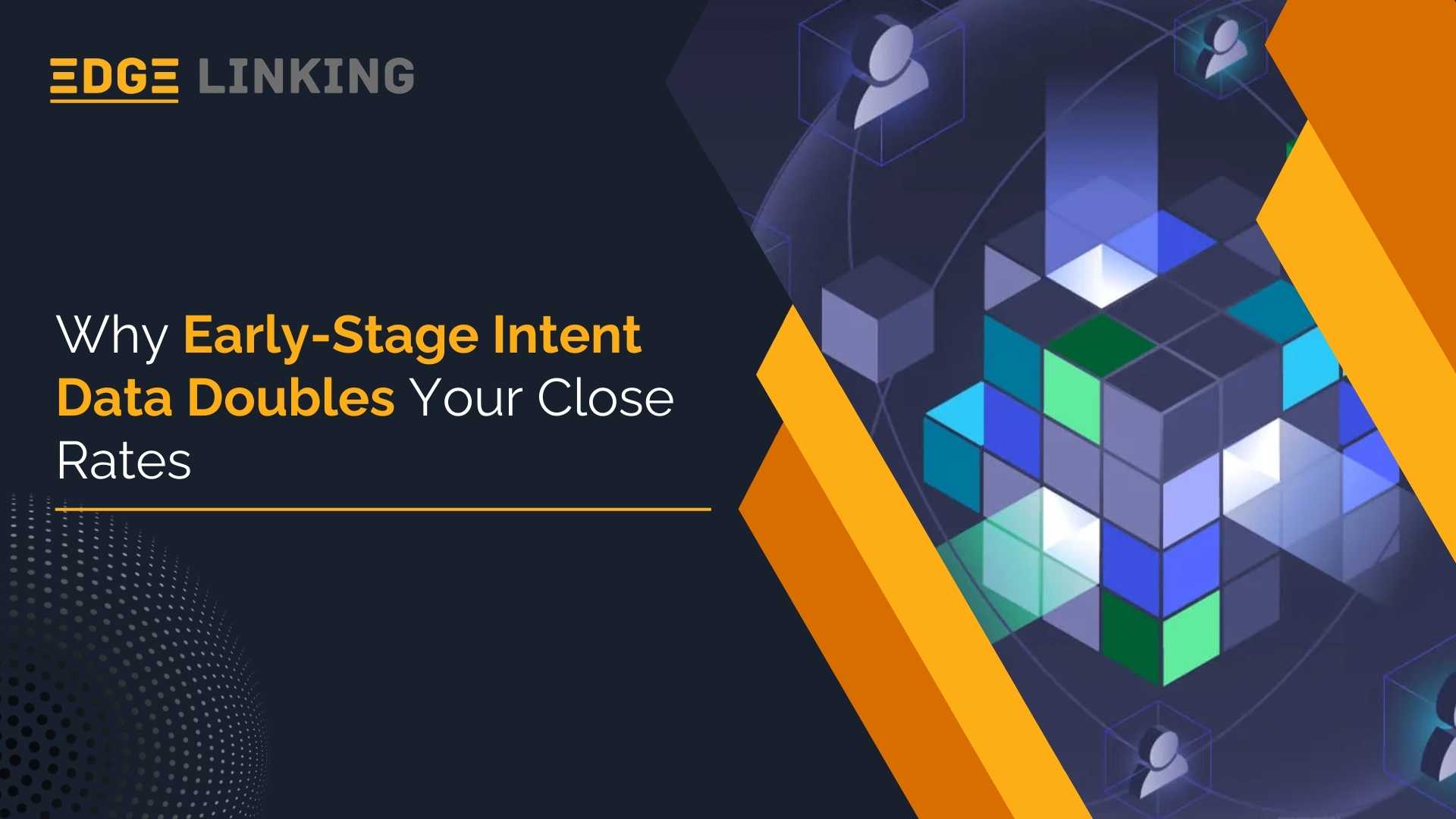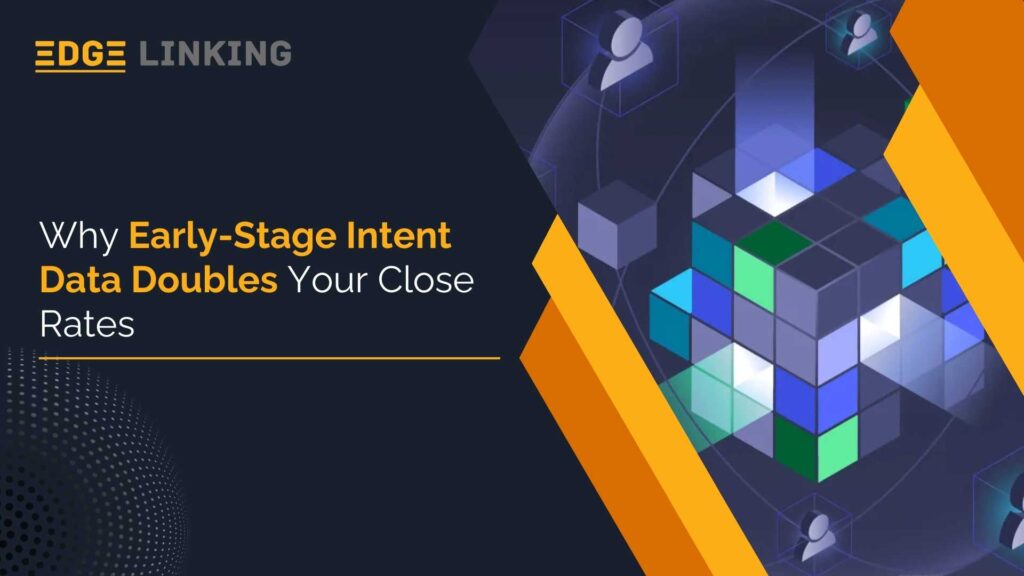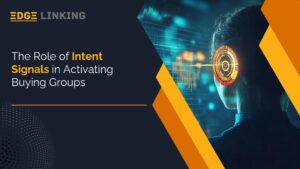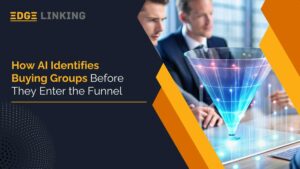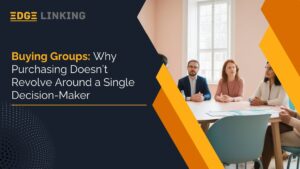Your sales team is chasing a high-profile account. The company perfectly fits your ICP, but at the peak moment, it stalls. What happened? The answer lies in timing. You focus on accounts that are showing strong purchase signals. But by that stage, your competitors are already in the conversation, and the window of opportunity has shrunk. However, spotting interest much earlier is possible due to early-stage intent data.
Early-stage intent data refers to signals that indicate a potential buyer is starting to research a solution, long before they fill out a demo form. Unlike late-stage signals, early-stage intent data highlights curiosity before a commitment is made.
The reason early-stage intent data has an impact on close rates comes down to timing and trust. If you engage too late in the buying cycle, you’re competing against vendors that buyers already have on their shortlist. On the other hand, by leveraging early-stage intent data, you can engage strategies that position your brand as a trusted source.
This article explains how early-stage intent data helps close deals.
Why Early-Stage Intent Data Matters in B2B
Here are the reasons why early-stage intent data is essential.
1.Identifies Buyers Before the Competition
Early-stage intent data helps you spot potential buyers while they are still in the research phase.
Example: A SaaS cybersecurity vendor notices IT managers consuming articles on “data breach prevention” across industry sites. They engage these accounts early.
2.Builds Engagement Strategies
Early intent signals enable marketing teams to design content and outreach that aligns with buyers’ needs during the awareness phase, rather than the decision phase.
Example: A cloud storage provider sees mid-sized firms downloading guides on “scaling storage solutions.” They launch a nurturing campaign with educational webinars rather than pitching a sales demo.
3.Influences Buying Decisions
When you reach prospects early, you have the chance to shape their understanding of the problem and possible solutions.
Example: An AI analytics platform identifies CFOs researching “predictive insights in finance.” By engaging early with whitepapers and ROI models, the company subtly positions its platform as a solution, influencing buying decisions.
4.Reduces Sales Cycle Length
Buyers who engage with a brand earlier in their purchasing journey tend to progress through the pipeline more quickly, as trust is already established.
Example: A HRTech provider finds HR directors engaging with content around “employee retention challenges.” By aligning sales follow-ups, deals close quickly because the relationship has already been nurtured.
5.Drives Higher Close Rates
Early engagement means you’re not just another vendor pitching a solution; you’re guiding the journey. It helps you win the deal.
Example: A payments platform detects finance leaders engaging with “cross-border payment challenges” six months before RFPs are issued. By the time competitors’ approach, the platform is already seen as a trusted advisor.
Engagement Strategies Powered by Intent Data
Here are the strategies that can be executed with the help of intent data.
1.Account-Based Nurturing
Early signals enable sales and marketing to collaborate on strategies that prioritize accounts exhibiting early buying intent.
Example: A global SaaS provider identifies Fortune 500 companies searching for “enterprise workflow automation.” Marketing launches targeted webinars for decision-makers while sales build one-to-one conversations.
2.Proactive Sales Outreach
Intent data enables sales teams to approach prospects at the right time with relevant messaging.
Example: A logistics platform detects supply chain directors researching “AI route optimization.” Sales engages them with a case study from a similar industry, demonstrating value.
3.Thought Leadership
Positioning you as an industry voice builds trust earlier in the buying journey. Intent data guides the topics that resonate with potential buyers.
Example: A FinTech company finds CFOs engaging with “real-time payment compliance.” Its CEO authors a LinkedIn article on compliance innovation, creating awareness.
4.Customized Buying Journeys
Buyers in the early stages of research require education, while those in later stages need solution comparisons. Intent data helps tailor strategies to each stage of the customer journey.
Example: An AI analytics vendor tracks CMOs consuming “predictive marketing ROI” content. They provide educational guides, then progress to ROI calculators and demos as engagement continues.
5.Cross-Channel Precision
Intent data ensures consistency across digital ads, email campaigns, events, and sales outreach.
Example: A HRTech firm aligns its campaigns so that HR leaders researching “employee retention” see targeted LinkedIn ads and personalized follow-up emails.
How to Integrate Early-Stage Intent Data in Your Marketing Plan
Here is the process of integrating intent data with your marketing plan.
1.Identify Early Buying Signals
Early-stage intent data captures subtle behaviors that indicate prospects have started researching.
Example: A SaaS vendor tracks procurement managers consuming blogs on “vendor consolidation strategies.” They classify accounts as high-potential for nurturing before they issue an RFP.
2.Prioritize Accounts
By layering early-stage intent data with filters (such as industry, revenue, and geography), you can align resources with the accounts most likely to convert.
Example: A cybersecurity company sees both SMBs and large enterprises reading about “ransomware protection.” They prioritize firms based on deal size and align them with business goals.
3.Develop Targeted Engagement Strategies
Use early intent insights to map personalized content journeys. At this stage, prospects are looking for information, not a hard sell.
Example: A HRTech firm notices CHROs engaging with “employee well-being initiatives.” They launch a thought leadership webinar featuring industry experts, positioning themselves as a trusted advisor.
4.Align Sales and Marketing Around Insights
Share early-stage signals across teams to ensure follow-up. Marketing nurtures accounts with educational campaigns, while sales prepare context-rich outreach.
Example: A cloud provider sees IT leaders reading about “multi-cloud migration.” Marketing runs an email series addressing migration myths, while sales build custom demos for CIOs.
5.Activate Cross-Channel Campaigns
Intent data is most effective when integrated across digital ads, ABM programs, social media, and events.
Example: A payments platform finds CFOs interested in “cross-border transaction efficiency.” They launch LinkedIn ads and tailored whitepapers of the same value proposition.
6.Measure and Optimize
Track how early-stage engagement translates into pipeline velocity, deal size, and win rates.
Example: A manufacturing company discovers that prospects engaged with early-stage sustainability content closed faster. They focused on sustainability-focused campaigns.
Conclusion
When you identify intent, engage first, and provide value, your chances of closing double. The lesson is that the future of revenue will be built on intent-driven strategies. By adopting the mindset, you outperform your competitors and create a sustainable model for growth. Shift from chasing opportunities to creating them early.
